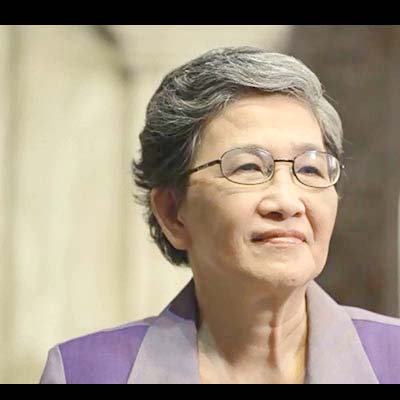The Chinese vessel that hit an anchored Filipino fishing boat in Recto (Reed) Bank and abandoned its crew of 22 floundering at sea on June 9 must pay for its negligence.
The joint investigation of the Philippine Coast Guard (PCG) and the Maritime Industry Authority (MARINA) concludes that the Chinese vessel, which China earlier identified as Yuemaobinyu 42212, could have taken steps to avoid hitting the “anchored” Gem-Ver 1.
Now, the ball is in our government’s court: How to hold the erring party responsible for its action and inaction.
The MARINA-PCG report is very clear: The Chinese vessel must be held responsible for the sinking of Gem-Ver, considered a “very serious marine casualty due to the total loss of the ship.” Our government’s previous stand dismissing it as a “minor” maritime incident no longer holds water.
The final report, dated June 20, was submitted to President Duterte, Defense Secretary Delfin Lorenzana and Foreign Secretary Teodoro Locsin Jr. as the country prepares to compare findings with China.
Deliberate or accidental, the official report says, the Chinese vessel was at fault for two main reasons. First, the Philippine vessel was stationary. Second, the vessel was lighted and the skies were clear the night it happened; hence, the lights could easily be seen from a distance.
The report stopped short of saying whether the ramming was intentional.
Rule 18 of the Convention on the International Regulations for Preventing Collisions at Sea 1972 (Collision Regulations or COLREG) stipulates that a power-driven vessel in motion “shall keep out of the way of a vessel not under command or a vessel restricted in her ability to maneuver.”
The joint report attested that Gem-Ver had two lights on: anchor lights of round white lights displayed fore and aft, and white flashing light displayed in its mast. This means the Filipino boat complied with maritime regulations (Rule 30 of COLREG) intended to prevent sea accidents.
The weather that night was “fair” and benefited from the light of “starry skies” and a first-quarter moon, reads the report. The sea was calm and visibility “slightly clear.” These details meant there were no external factors that could have hindered the Chinese vessel from seeing Gem-Ver and avoiding a collision.
The report also categorically stated that the Chinese ship knew of the dire situation of the Gem-Ver crew after their boat was hit yet refused to help.
“By maneuvering back and stopping approximately 50 meters away from FB Gem-Ver with her fishing lights open, the other vessel can be considered to have direct knowledge of the distress situation,” reads the document.
Thus, the Chinese ship was found to have violated two maritime laws – the United Nations Convention on the Law of the Sea (UNCLOS) and the International Convention for the Safety of Life at Sea.
“Every state shall require the master of a ship flying its flag, in so far as he can do so without serious danger to the ship, the crew or passengers; after a collision to render assistance to the other ship, its crew and its passengers,” reads Part VII, Article 98 of UNCLOS.
The Pamalakaya, a nongovernment organization of fishermen, said the findings of the PCG and the MARINA provide enough grounds to sue Yuemaobinyu.
We hope the Philippines doesn’t have to go as far as suing the Chinese captain and its crew for the incident. But China’s lack of action to make amends is perturbing. I am sure the Chinese were able to investigate even faster than the Philippines. Yet, it has chosen to keep quiet up to this time rather than own up to the shameful act and punish those responsible.
Meanwhile, Duterte’s nonsensical statements that it will join the United States if it chooses to wage war on China over the West Philippine Sea is flip rhetoric. It shows how little care and understanding the government gives to the gravity and seriousness of the real issues around the disputed waters. Neither the US nor China would choose to go to war over this incident.
On the home front
The recent moves of newly elected Manila Mayor Isko Moreno have given us hope that Manila can recover from the deterioration it suffered over the past few years.
Under Joseph Estrada’s six-year leadership, Manila had steadily fallen apart. It became seedy, dirty, chaotic and unfit for human beings. Right in front of city hall, traffic was chaotic, vendors occupied the streets and sidewalks, sidecars wove in and out of the main thoroughfares. The hurly burly of the city streets made people wonder if anyone was in charge.
But Moreno’s first week in office has achieved what was seemingly insurmountable before. The new mayor has cleared the sidewalks and streets such as CM Recto Avenue of illegal vendors who proliferated under Estrada’s watch.
His move to protect heritage shrines impressed me the most. Can you believe street dwellers urinating, defecating and doing their ablutions behind the Katipunan Monument right beside city hall? Past city administrators apparently turned a blind eye to these acts of desecration unfolding right before them. Moreno refuses to tolerate these.
I am also most happy with the removal of politicians’ names painted on walls and signs, tarpaulin and billboards attached to government buildings, schools and projects. Moreno said no politician must claim credit for projects built out of public funds.
Moreno’s job will not be easy. The Commission on Audit reports that not only is the city bankrupt, it is likewise deeply in debt, to the tune of nearly P4 billion.
We hope Moreno will sustain his great work. Manileños will benefit from the improvements he brings, and Filipinos all over the country can hold their heads high when they say Manila is the capital of the Philippines.
Categories
The guilty must pay





